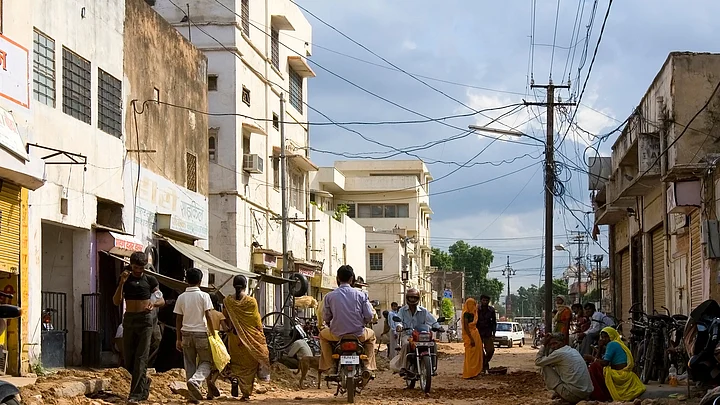Piyush Goyal claim of ‘record’ rural electrification may ring hollow when you compare it with data from past electrification programmes.
The Minister of State for Coal and Power applauded the NDA’s success on Twitter – 7,501 villages electrified between April 2015-2016.
But sample this. Compared to the Modi government’s ‘record’ of electrifying 7,501 villages over 13 months (7,108 in FY16 so far), the UPA electrified 28,706 villages in FY07. The 7,501 number also pales when compared to the UPA government’s electrification success in FY10 and FY11 – reaching over 18,300 villages each year.
This data is drawn mostly from the annual report of state-owned Rural Electrification Corporation (REC) which was tasked with implementing the Rajiv Gandhi Grameen Vidyutikaran Yojana (RGGVY) in 2005 under the first UPA government. The scheme was aimed at giving all rural households access to electricity.
In 2014, after the Modi government came to power, it subsumed the RGGVY under an expanded programme to provide electricity for all, and named it the Deendayal Upadhyaya Gram Jyoti Yojana (DDUGJY). REC remained the nodal agency for fulfilling the rural electrification mandate.
In response to a query on the UPA’s electrification record, Congress spokesperson Sanjay Jha told Bloomberg Quint in an emailed response,
The enormous success of the UPA was on account of higher financial outlays, greater and more effective Centre-state coordination and a commitment to revolutionise the farm sector and rural households....The NDA government’s rural electrification efforts have yielded unsatisfactory results relative to UPA’s performance. Since the benchmark used is just 10 percent of households having electricity, a massive effort is called for. Modi Sarkar needs to stop sloganeering and do some serious work.
Does the NDA Have a Tougher Job?
But the UPA itself was not able to sustain the high numbers achieved in the early years. After covering more than 18,300 villages in FY10 and FY11 each, the UPA’s rural electrification programme slowed down to cover just 7,934 villages in FY12 and the number fell dramatically to 1,197 villages in FY14.
REC, the government company tasked with rural electrification explains why the numbers have drifted lower since FY11. In an emailed response to Bloomberg Quint’s queries, REC stated ‘the most accessible villages were electrified first. However as the scope of villages to be electrified reduced and challenges like remoteness, inaccessibility (thickly forested, mountainous regions, etc.), and Left-wing extremism, etc. increased, the number of villages that were electrified in these years showed a decreasing trend.’
Referring to the increasing hardship in electrifying rural India REC noted that ‘In spite of the growing challenges in these remaining un-electrified villages, the 7,108 villages electrified in 2015-16 is higher than the achievement of the past three financial years.’ In response to a question in Parliament, Minister Goyal offered a state-wise list of villages electrified in FY16. That list suggests electricity reached a large number of villages in Bihar, Uttar Pradesh, Odisha, Jharkhand and the north-eastern states of Assam and Arunachal Pradesh.
The NDA probably had it tougher, which would make the 7,501 a commendable number but hardly a record-breaking one.
(This story was re-written to include a response from REC)
(At The Quint, we question everything. Play an active role in shaping our journalism by becoming a member today.)
